International Space Station
International Space Station
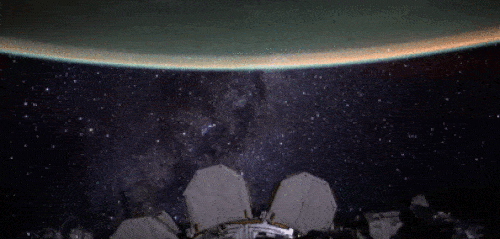
The International Space Station is an important and special place that is built on international cooperation and partnership. The station is a convergence of science, technology and human innovation that benefits and advances our global community here on Earth.

While the space station is an important aspect of our low-Earth orbit exploration, it is also the key to our next giant leap to deep space and our Journey to Mars. For example, our recent VEGGIE experiment aboard the space station is a critical aspect of long-duration exploration missions farther into the solar system. Food grown in space will be a resource for crew members that can provide them will essential vitamins and nutrients that will help enable deep space pioneering.
Another important experiment underway is the Twins Study that involves twin astronauts Scott and Mark Kelly. These investigations will provide insight into the subtle effects and changes that may occur in spaceflight as compared to Earth by studying two individuals who have the same genetics, but are in different environments for one year. You can follow Scott Kelly as he spends a year in space.
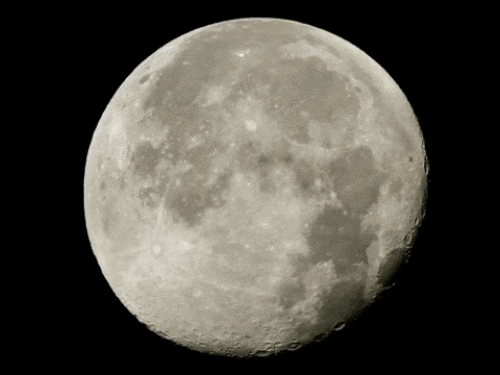
The space station is the second brightest object in the sky (after the moon, of course), and you don’t even need a telescope to see it! We can even tell you exactly when and where to look up to Spot the Station in your area!
So, as you look to spot the station in the sky, remember that even though it may look small from Earth, the crew onboard (and at home) are making contributions to international partnerships and global research.
More Posts from Nasa and Others
NASA: 2016 Look Ahead

The work we do, and will continue in 2016, helps the United States maintain its world leadership in space exploration and scientific discovery. Here’s an overview of what we have planned for the coming year:
Our Journey to Mars

We’re developing the capabilities needed to send humans to an asteroid by 2025 and Mars in the 2030s. Mars is a rich destination for scientific discovery and robotic and human exploration as we expand our presence into the solar system. Its formation and evolution are comparable to Earth, helping us learn more about our own planet’s history and future.
Work and Research on the International Space Station

The International Space Station is a unique place – a convergence of science, technology and human innovation that demonstrates new technologies and makes research breakthroughs not possible on Earth. In 2016, we will continue our groundbreaking research on the orbiting laboratory.
Returning Human Spaceflight Launches to American Soil

Our Commercial Crew Program is working with the American aerospace industry as companies develop and operate a new generation of spacecraft and launch systems capable of carrying crews to low-Earth orbit and the International Space Station. Commercial transportation to and from the station will provide expanded utility, additional research time and broader opportunities of discovery on the orbiting laboratory.
Studying Our Earth Right Now

We use the vantage point of space to increase our understanding of our home planet, improve lives and safeguard our future. In 2016, we will continue to monitor Earth’s vital signs from land, air and space with a fleet of satellites and ambitious airborne and ground-based observation campaigns.
Fostering Groundbreaking Technology Development

Sustained investments in NASA technology advances our space exploration, science and aeronautics capabilities. Our technology development also supports the nation's innovation economy by creating solutions that generate tangible benefits for life on earth. In 2016, we will continue to invest in the future of innovation.
Breakthroughs in Aeronautics

Thanks to our advancements in aeronautics, today’s aviation industry is better equipped than ever to safely and efficiently transport all those passengers to their destinations. In fact, every U.S. aircraft flying today and every U.S. air traffic control tower uses NASA-developed technology in some way. In 2016, we will continue making these breakthroughs in aeronautics.
Discoveries in Our Solar System and Beyond

This year we will continue exploring our solar system and beyond to unravel the mysteries of our universe. We are looking to answer key questions about our home planet, neighboring planets in our solar system and more!
Make sure to follow us on Tumblr for your regular dose of space: http://nasa.tumblr.com
What’s Up for April 2016?
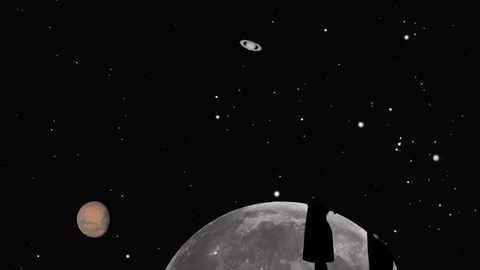
Jupiter, Mars, the Lyrid meteor shower and 2016’s best views of Mercury are all visible in the sky this month.
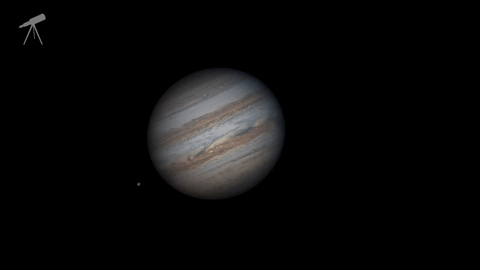
Jupiter, where our Juno mission will begin orbiting on July 4, continues to shine almost as brightly this month as last. And eagle-eyed telescope viewers will see a transit, a shadow transit, an occultation and an eclipse of Jupiter’s moons- all in one night: April 6-7.
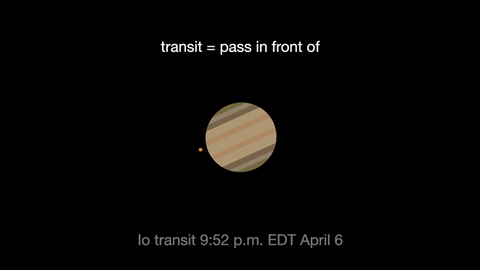
Io transits first, crossing the planet beginning at 9:52 p.m. EDT. It’s shadow can be seen less than an hour later.
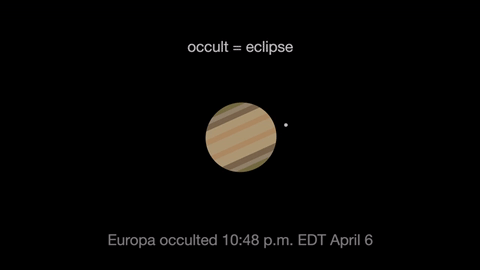
Next Jupiter occults, or eclipses, Europa as Europa slips behind the giant planet at 10:48 p.m. EDT. At 3 a.m. Europa reappears from its eclipse, dramatically leaving the shadow of Jupiter.
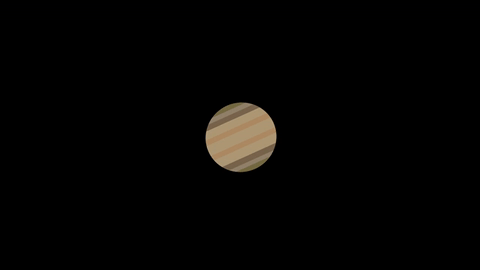
Ganymede transits the planet beginning at 1:01 EDT April 7.
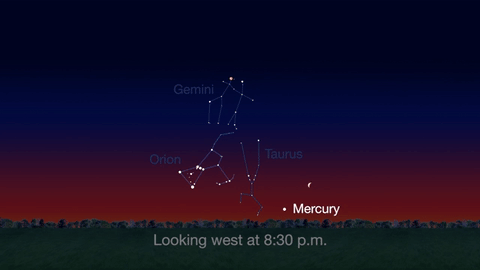
Check out the other planets in April, too! Mercury is always a challenging object to view, but this month you can spot it after sunset about 10 degrees above the horizon. Through a telescope you can see its phase. It will appear like a tiny crescent moon, with about 1/3 of its disk illuminated.
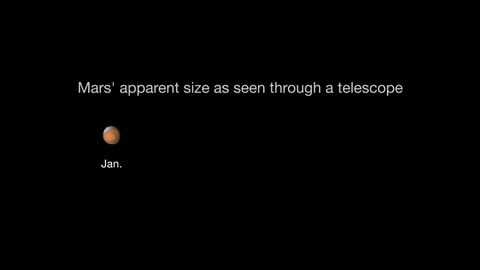
Mars is finally visible before midnight this month. It rises in the southeast at about 10 p.m. by the end of April. The best observing of Mars will be when it is highest in the sky. This means a few hours before dawn. Its brightness and apparent size increase dramatically this month. By month’s end, Mars appears nearly twice as bright as at the beginning of the month.
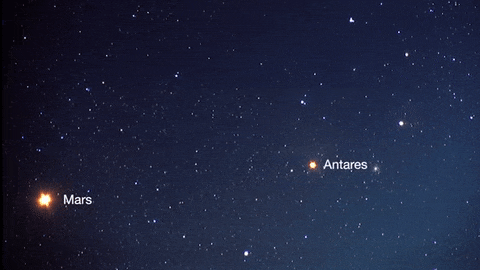
About mid-month you’ll see Mars near its rival in the sky: the similar-colored red supergiant star Antares. The name “Antares” means “equal to or rival of Mars”.
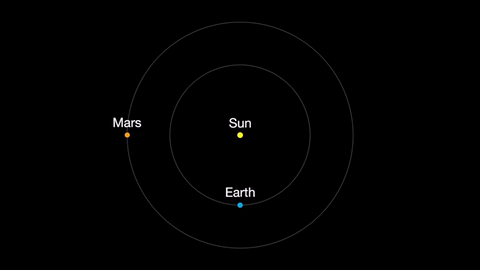
Earth moves almost twice as fast as Mars does, so it often passes Mars in their race around the sun. This causes “retrograde motion”: an illusion we see from our viewpoint on Earth.
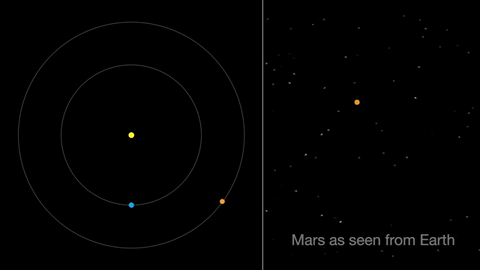
Retrograde motion happens as Earth catches up to Mars, causing Mars to appear slow to slow its eastward motion against the stars. After a few days, when Earth has overtaken Mars, the Red Planet seems to move westward. Eventually, Earth moves far enough around its orbit that Mars appears to be moving eastward again.
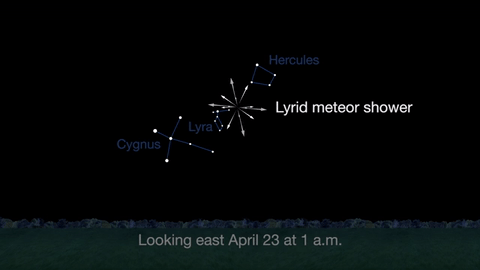
April features one meteor shower, the Lyrids. This year the Lyrids are marred by the full moon. The best time to view will be just before dawn on April 23, when the constellation Lyra is overhead and the moon will be near to setting.
With all of these great things to spot in the sky this month, be sure to get outside and look up!
Make sure to follow us on Tumblr for your regular dose of space: http://nasa.tumblr.com
What’s aboard SpaceX’s Dragon?
On Dec 5. 2019, a SpaceX Falcon 9 rocket blasted off from Cape Canaveral Air Force Station in Florida carrying a Dragon cargo capsule filled with dozens of scientific experiments. Those experiments look at everything from malting barley in microgravity to the spread of fire.

Not only are the experiments helping us better understand life in space, they also are giving us a better picture of our planet and benefiting humanity back on Earth.
📸 A Better Picture of Earth 🌏
Every material on the Earth’s surface – soil, rocks, vegetation, snow, ice and human-made objects – reflects a unique spectrum of light. The Hyperspectral Imager Suite (HISUI) takes advantage of this to identify specific materials in an image. It could be useful for tasks such as resource exploration and applications in agriculture, forestry and other environmental areas.

🌱 Malting Barley in Microgravity 🌱
Many studies of plants in space focus on how they grow in microgravity. The Malting ABI Voyager Barley Seeds in Microgravity experiment is looking at a different aspect of plants in space: the malting process. Malting converts starches from grain into various sugars that can be used for brewing, distilling and food production. The study compares malt produced in space and on the ground for genetic and structural changes, and aims to identify ways to adapt it for nutritional use on spaceflights.

🛰️ A First for Mexico 🛰️
AztechSat-1, the first satellite built by students in Mexico for launch from the space station, is smaller than a shoebox but represents a big step for its builders. Students from a multidisciplinary team at Universidad Popular Autónoma del Estado de Puebla in Puebla, Mexico, built the CubeSat. This investigation demonstrates communication within a satellite network in low-Earth orbit. Such communication could reduce the need for ground stations, lowering the cost and increasing the number of data downloads possible for satellite applications.

🚀 Checking for Leaks 🚀
Nobody wants a spacecraft to spring a leak – but if it happens, the best thing you can do is locate and fix it, fast. That’s why we launched the first Robotic External Leak Locator (RELL) in 2015. Operators can use RELL to quickly detect leaks outside of station and help engineers formulate a plan to resolve an issue. On this latest commercial resupply mission, we launched the Robotic Tool Stowage (RiTS), a docking station that allows the RELL units to be stored on the outside of space station, making it quicker and simpler to deploy the instruments.

🔥 The Spread of Fire 🔥
Understanding how fire spreads in space is crucial for the safety of future astronauts and for controlling fire here on Earth. The Confined Combustion investigation examines the behavior of flame as it spreads in differently-shaped spaces in microgravity. Studying flames in microgravity gives researchers a chance to look at the underlying physics and basic principles of combustion by removing gravity from the equation.

💪 Staying Strong 💪
Here on Earth you might be told to drink milk to grow up with strong bones, but in space, you need a bit more than that. Astronauts in space have to exercise for hours a day to prevent substantial bone and muscle loss. A new experiment, Rodent Research-19, is seeing if there is another way to prevent the loss by targeting signaling pathways in your body at the molecular level. The results could also support treatments for a wide range of conditions that cause muscle and bone loss back here on Earth.

Want to learn about more investigations heading to the space station (or even ones currently under way)? Make sure to follow @ISS_Research on Twitter and Space Station Research and Technology News on Facebook.
If you want to see the International Space Station with your own eyes, check out Spot the Station to see it pass over your town.
Make sure to follow us on Tumblr for your regular dose of space: http://nasa.tumblr.com.
Our Answer Time with flight directors Diane Dailey and Chloe Mehring is now scheduled for Dec. 7 at 12 p.m. EST (9 a.m. PST). Join us then to see your questions answered!

What’s It Like to Work in NASA’s Mission Control Center?
In the latest installment of our First Woman graphic novel series, we see Commander Callie Rodriguez embark on the next phase of her trailblazing journey, as she leaves the Moon to take the helm at Mission Control.

Flight directors work in Mission Control to oversee operations of the International Space Station and Artemis missions to the Moon. They have a unique, overarching perspective focused on integration between all the systems that make a mission a success – flight directors have to learn a little about a lot.
Diane Dailey and Chloe Mehring were selected as flight directors in 2021. They’ll be taking your questions about what it’s like to lead teams of flight controllers, engineers, and countless professionals, both agencywide and internationally, in an Answer Time session on Nov. 28, 2023, from noon to 1 p.m. EST (9-10 a.m. PST) here on our Tumblr!
Like Callie, how did their unique backgrounds and previous experience, prepare them for this role? What are they excited about as we return to the Moon?
🚨 Ask your questions now by visiting https://nasa.tumblr.com/ask.
Diane Dailey started her career at NASA in 2006 in the space station Environmental Control and Life Support Systems (ECLSS) group. As an ECLSS flight controller, she logged more than 1,700 hours of console time, supported 10 space shuttle missions, and led the ECLSS team. She transitioned to the Integration and System Engineering (ISE) group, where she was the lead flight controller for the 10th and 21st Commercial Resupply Services missions for SpaceX. In addition, she was the ISE lead for NASA’s SpaceX Demo-1 and Demo-2 crew spacecraft test flights. Dailey was also a capsule communicator (Capcom) controller and instructor.
She was selected as a flight director in 2021 and chose her call sign of “Horizon Flight” during her first shift in November of that year. She has since served as the Lead Flight director for the ISS Expedition 68, led the development of a contingency spacewalk, and led a spacewalk in June to install a new solar array on the space station. She is currently working on development of the upcoming Artemis II mission and the Human Lander Systems which will return humanity to the moon. Dailey was raised in Lubbock, Texas, and graduated from Texas A&M University in College Station with a bachelor’s degree in biomedical engineering. She is married and a mother of two. She enjoys cooking, traveling, and spending time outdoors.
Chloe Mehring started her NASA career in 2008 in the Flight Operations’ propulsion systems group and supported 11 space shuttle missions. She served as propulsion support officer for Exploration Flight Test-1, the first test flight of the Orion spacecraft that will be used for Artemis missions to the Moon. Mehring was also a lead NASA propulsion officer for SpaceX’s Crew Dragon spacecraft and served as backup lead for the Boeing Starliner spacecraft. She was accepted into the 2021 Flight Director class and worked her first shift in February 2022, taking on the call sign “Lion Flight”. Since becoming certified, she has worked over 100 shifts, lead the NG-17 cargo resupply mission team, and executed two United States spacewalks within 10 days of each other. She became certified as a Boeing Starliner Flight Director, sat console for the unmanned test flight in May 2022 (OFT-2) and will be leading the undock team for the first crewed mission on Starliner in the spring of next year. She originally is from Mifflinville, Pennsylvania, and graduated with a bachelor’s degree in aerospace engineering from The Pennsylvania State University in State College. She is a wife, a mom to one boy, and she enjoys fitness, cooking and gardening.
NASA and Star Trek
Star Trek debuted in September 1966 and in its various incarnations, the series has been an inspiration to many, even some of us at NASA. The series allowed its fans to explore “strange new worlds” and to dream of what could be right in their living rooms. To celebrate the show’s 50th anniversary, we’ve collected some Trek-themed photos featuring Star Trek cast members and NASA astronauts.
Serious Business

The STS-54 crew of the space shuttle Endeavour in their official "gag" photo are costumed as the bridge crew of the Enterprise as depicted in the movie "Star Trek II: The Wrath of Khan.” The photo was taken on the Star Trek Adventure set of the Universal Studios California theme park in Los Angeles, California, while the crew was on a west coast training and public relations tour during the Summer of 1992. From left to right:
Greg Harbaugh (Mission Specialist/Engineering Officer)
Mario "Spock" Runco Jr. (Mission Specialist/1st Officer/Science Officer)
John Casper (Commander/Captain)
Susan Helms (Mission Specialist/Communications Officer)
Don McMonagle (Pilot/Navigation-Helm Officer)
“I have been, and always shall be, your friend”

Astronaut John Creighton shows the on board Graphical Retrieval Information Display (GRID) computer, which displays a likeness of Mr. Spock aboard STS-051G, June 18, 1985.
“A Keyboard. . . How Quaint”

Actor James Doohan (who played engineering genius Montgomery Scott in Star Trek) sits in the commanders seat of the Full Fuselage Trainer while astronaut Mario Runco explains the control panel during a tour of Johnson Space Center on Jan. 18, 1991.
“You Wanted Excitement, How's Your Adrenaline?”

Actress Nichelle Nichols (Uhura in Star Trek) toured Johnson Space Center in Houston on March 4, 1977, while Apollo 12 lunar module pilot and Skylab II commander Alan Bean showed her what it felt like inside the Lower Body Negative Pressure Device and showed her how the Shuttle Procedures Simulator operated.


Nichols paid us another visit in 2012 and 2015 with the Space Traveling Museum.
Infinite Diversity, Infinite Combinations

European Space Agency astronaut Samantha Cristoforetti gave the Vulcan salute aboard the International Space Station shortly after the passing of Leonard Nimoy on Feb. 28, 2015. She commented on Tweeter: " ‘Of all the souls I have encountered.. his was the most human.’ Thx @TheRealNimoy for bringing Spock to life for us"
Live Long And Prosper

While visiting Johnson Space Center in Houston, TX, George Takei (Hikaru Sulu on the original series) had the chance to exchange Vulcan salutes with Robonaut on May 29, 2012.
“Let’s See What’s Out There”

Scott Bakula, who played Captain Jonathan Archer on Star Trek: Enterprise, stands with astronauts Terry Virts and Mike Fincke on set. The two astronauts made guest appearances on the series finale episode “These Are The Voyages . . .” March 2005.
Boldly Going For Real

Above is the crew of STS-134, the next to last shuttle mission, in their version of the 2009 Star Trek movie poster.

The crew of Expedition 21 aboard the International Space Station also made a Trek-themed poster in 2009, wearing uniforms from Star Trek: The Next Generation with the Enterprise NX-01 silhouette in the background.
Learn more about Star Trek and NASA.
Make sure to follow us on Tumblr for your regular dose of space: http://nasa.tumblr.com
What were some of the biggest challenges in this project and how did you overcome them?
How Well Do you Know Neptune?

Dark, cold and whipped by supersonic winds, Neptune is the last of the hydrogen and helium gas giants in our solar system. More than 30 times as far from the sun as Earth, the planet takes almost 165 Earth years to orbit our sun! In fact, in 2011, Neptune completed its first orbit since its discovery in 1846.

Here are a few things you might not know about the windiest planet:
If the sun were as tall as a typical front door, the Earth would be the size of a nickel and Neptune would be about as big as a baseball.
Neptune orbits our sun, a star. Neptune is the eighth planet from the sun at a distance of about 4.5 billion km (2.8 billion miles) or 30.07 AU.
One day on Neptune takes about 16 hours (the time it takes for Neptune to rotate or spin once)
Neptune makes a complete orbit around the sun (a year in Neptunian time) in about 165 Earth years (60,190 Earth days)
Neptune has six rings
Voyager 2 is the only spacecraft to have visited Neptune
Neptune has 13 moons. They are named after various sea gods and nymphs in Greek mythology
Did you know that Neptune has storms?

Similar to Jupiter, Neptune has storms that create gigantic spots in its atmosphere…well, it did. When Voyager 2 flew past Neptune in 1989, it tracked and imaged the “Great Dark Spot” — a storm larger than the entire Earth! When the Hubble Space Telescope imaged Neptune the spot had disappeared, only to be replaced with two smaller storms, which in turn also disappeared.
Make sure to follow us on Tumblr for your regular dose of space: http://nasa.tumblr.com
Small Businesses with Big Plans for the Moon and Mars
Today is Small Business Saturday, which the U.S. Small Business Administration (SBA) recognizes as a day to celebrate and support small businesses and all they do for their communities.

Source: Techshot
We are proud to partner with small businesses across the country through NASA’s Small Business Innovative Research (SBIR) and Small Business Technology Transfer (STTR) programs, which have funded the research, development and demonstration of innovative space technologies since 1982. This year, we’ve awarded 571 SBIR/STTR contracts totaling nearly $180 million to companies who will support our future exploration:
Techshot, Inc. was selected to bioprint micro-organs in a zero-gravity environment for research and testing of organs-on-chip devices, which simulate the physiological functions of body organs at a miniature scale for health research without the need for expensive tests or live subjects.
CertainTech, Inc., with the George Washington University, will demonstrate an improved water recovery system for restoring nontoxic water from wastewater using nanotechnology.
Electrochem, Inc. was contracted to create a compact and lightweight regenerative fuel cell system that can store energy from an electrolyzer during the lunar day to be used for operations during the lunar night.

Source: Electrochem
Small businesses are also developing technologies for the Artemis missions to the Moon and for human and robotic exploration of Mars. As we prepare to land the first woman and next man on the Moon by 2024, these are just a few of the small businesses working with us to make it happen.
Commercial Lunar Payload Delivery Services
Masten Space Systems, Astrobotic and Tyvak Nano-Satellite Systems are three NASA SBIR/STTR alumni now eligible to bid on NASA delivery services to the lunar surface through Commercial Lunar Payload Services (CLPS) contracts. Other small businesses selected as CLPS providers include Ceres Robotics, Deep Space Systems, Intuitive Machines, Moon Express, and Orbit Beyond. Under the Artemis program, these companies could land robotic missions on the Moon to perform science experiments, test technologies and demonstrate capabilities to help the human exploration that will follow. The first delivery could be as early as July 2021.

A Pathfinder CubeSat
One cornerstone of our return to the Moon is a small spaceship called Gateway that will orbit our nearest neighbor to provide more access to the lunar surface. SBIR/STTR alum Advanced Space Systems will develop a CubeSat that will test out the lunar orbit planned for Gateway, demonstrating how to enter into and operate in the unique orbit. The Cislunar Autonomous Positioning System Technology Operations and Navigation Experiment (CAPSTONE) could launch as early as December 2020.

Tipping Point for Moon to Mars
We selected 14 companies as part of our Tipping Point solicitation, which fosters the development of critical, industry-led space capabilities for our future missions. These small businesses all proposed unique technologies that could benefit the Artemis program.
Many of these small businesses are also NASA SBIR/STTR alumni whose Tipping Point awards are related to their SBIR or STTR awards. For example, Infinity Fuel Cell and Hydrogen, Inc. (Infinity Fuel) will develop a power and energy product that could be used for lunar rovers, surface equipment, and habitats. This technology stems from a new type of fuel cell that Infinity Fuel developed with the help of NASA SBIR/STTR awards.
CU Aerospace and Astrobotic are also small businesses whose Tipping Point award can be traced back to technology developed through the NASA SBIR/STTR program. CU Aerospace will build a CubeSat with two different propulsion systems, which will offer high performance at a low cost, and Astrobotic will develop small rover “scouts” that can host payloads and interface with landers on the lunar surface.

Small Businesses, Big Impact
This is just a handful of the small businesses supporting our journey back to the Moon and on to Mars, and just a taste of how they impact the economy and American innovation. We are grateful for the contributions that small businesses make—though they be but “small,” they are fierce.
Make sure to follow us on Tumblr for your regular dose of space: http://nasa.tumblr.com
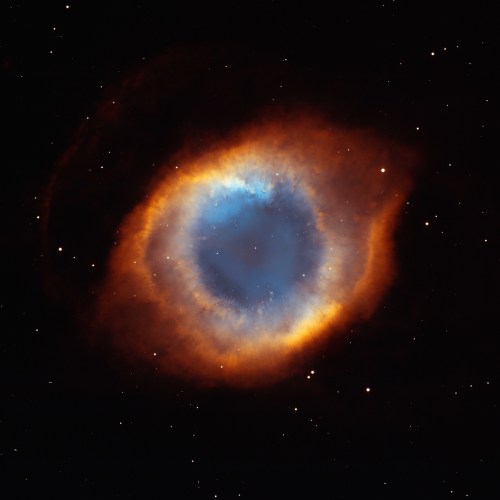
Say hello to the Helix Nebula 👋
In 2001 and 2002, our Hubble Space Telescope looked at the Helix Nebula and it looked right back! This planetary nebula is right in our cosmic neighborhood, only about 650 light-years away. Gigantic for this type of cosmic object, the Helix Nebula stretches across 2 to 3 light-years.
With no actual connection to planets, planetary nebulas like this one are produced when a medium-mass star dies and sloughs off its outer layers. These gaseous layers are expelled into space at astonishing speeds where they light up like fireworks. The Helix Nebula is one of the closest planetary nebulas to Earth, giving scientists an up-close view of its strange affairs.
Through Hubble’s observations, scientists have learned that the Helix Nebula isn’t doughnut-shaped as it appears. Instead it consists of two disks that are nearly perpendicular to each other — the nebula looks like an eye and bulges out like one too!
Hubble has also imaged comet-like tendrils that form a pattern around the central star like the spokes on a wagon wheel, likely resulting from a collision between gases. The dying star spews hot gas from its surface, which crashes into the cooler gas that it ejected 10,000 years before. Eventually the knots will dissipate into the cold blackness of interstellar space.
Make sure to follow us on Tumblr for your regular dose of space: http://nasa.tumblr.com.
Go Behind the Scenes of Science in Space

Gravity rules everything on Earth, from how our bodies develop to what our research can reveal, but what happens when we go 250 miles up to the International Space Station?

Get ready to go behind the scenes of what it takes to get science to space, and meet the people who make it happen.

Introducing Season 4 of NASA Explorers: Microgravity. Floating isn’t just fun. Microgravity could open the door to discovery.
You’ve seen things floating in space, but why does that happen and how does it affect science being conducted aboard the International Space Station?
Microgravity makes the International Space Station the perfect place to perform research that is changing the lives of people on Earth, and preparing us to go deeper into space. This season on our series NASA Explorers, we are following science into low-Earth orbit and seeing what it takes to do research aboard the space station.
Follow NASA Explorers on Facebook to catch new episodes of season 4 every Wednesday!
-
 sweetbutterbliss reblogged this · 3 years ago
sweetbutterbliss reblogged this · 3 years ago -
 sweetbutterbliss liked this · 3 years ago
sweetbutterbliss liked this · 3 years ago -
 catanosoganoderma-blog liked this · 7 years ago
catanosoganoderma-blog liked this · 7 years ago -
 acceptableinthe1980s reblogged this · 7 years ago
acceptableinthe1980s reblogged this · 7 years ago -
 wintervision liked this · 7 years ago
wintervision liked this · 7 years ago -
 divyasamarpan26-blog liked this · 7 years ago
divyasamarpan26-blog liked this · 7 years ago -
 colorfulbirdtree-blog reblogged this · 7 years ago
colorfulbirdtree-blog reblogged this · 7 years ago -
 colorfulbirdtree-blog liked this · 7 years ago
colorfulbirdtree-blog liked this · 7 years ago -
 rachel-schoeller liked this · 9 years ago
rachel-schoeller liked this · 9 years ago -
 kateuba liked this · 9 years ago
kateuba liked this · 9 years ago -
 5am-thoughts-and-dreams liked this · 9 years ago
5am-thoughts-and-dreams liked this · 9 years ago -
 astrovni-blog reblogged this · 9 years ago
astrovni-blog reblogged this · 9 years ago -
 doorbellbforever-blog liked this · 9 years ago
doorbellbforever-blog liked this · 9 years ago -
 science-it-forward reblogged this · 9 years ago
science-it-forward reblogged this · 9 years ago -
 blogging-ben liked this · 9 years ago
blogging-ben liked this · 9 years ago -
 blogging-ben reblogged this · 9 years ago
blogging-ben reblogged this · 9 years ago -
 dude-vader liked this · 9 years ago
dude-vader liked this · 9 years ago -
 spinachbeetle liked this · 9 years ago
spinachbeetle liked this · 9 years ago -
 sherubi-chan reblogged this · 9 years ago
sherubi-chan reblogged this · 9 years ago -
 jazracanah liked this · 9 years ago
jazracanah liked this · 9 years ago -
 gxlddivmonds liked this · 9 years ago
gxlddivmonds liked this · 9 years ago -
 adu101 liked this · 9 years ago
adu101 liked this · 9 years ago -
 onepercentof1 liked this · 9 years ago
onepercentof1 liked this · 9 years ago -
 paranormal2things liked this · 9 years ago
paranormal2things liked this · 9 years ago -
 keldurahm liked this · 9 years ago
keldurahm liked this · 9 years ago -
 chalolo10-blog liked this · 9 years ago
chalolo10-blog liked this · 9 years ago -
 aron85312-blog liked this · 9 years ago
aron85312-blog liked this · 9 years ago -
 its-diane-universe-blog liked this · 9 years ago
its-diane-universe-blog liked this · 9 years ago -
 consultingjedi reblogged this · 9 years ago
consultingjedi reblogged this · 9 years ago -
 scaryliterary reblogged this · 9 years ago
scaryliterary reblogged this · 9 years ago -
 sasusprite reblogged this · 9 years ago
sasusprite reblogged this · 9 years ago -
 vartoc reblogged this · 9 years ago
vartoc reblogged this · 9 years ago -
 casuallycoldpeace-blog liked this · 9 years ago
casuallycoldpeace-blog liked this · 9 years ago -
 bread-of-alice liked this · 9 years ago
bread-of-alice liked this · 9 years ago -
 paolarq reblogged this · 9 years ago
paolarq reblogged this · 9 years ago -
 paolarq liked this · 9 years ago
paolarq liked this · 9 years ago -
 mmsaltonblog-blog liked this · 9 years ago
mmsaltonblog-blog liked this · 9 years ago
Explore the universe and discover our home planet with the official NASA Tumblr account
1K posts